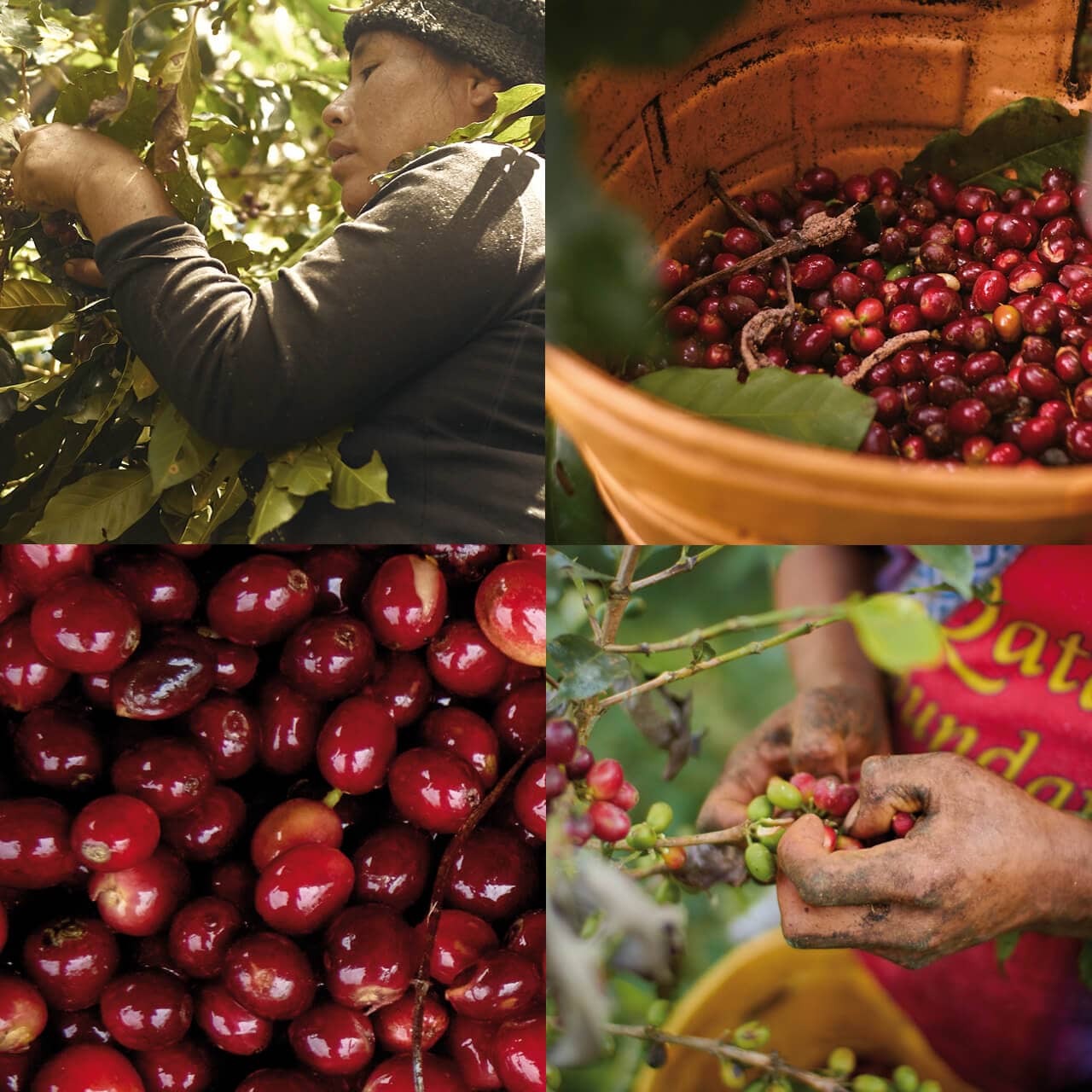In May, the harvest season at La Chacra D’ Dago in Peru has begun – a little later than in most growing regions, where they sometimes start as early as the end of March. But it’s not only a matter of when, the how is essential for a real good coffee, too.

A coffee-harvest requires knowledge and time. Lots of time. Time, that we are happy to take.
Why? One shrubs cherries are not ripe concurrently. Some are green, some are black and overripe, others are yellow. But only the red cherries hold the whole firework of flavors and nuances for an amazing coffee.
With the picking-method, that we use, only the red cherries get collected. This process needs to be conducted over and over – and every time, some more cherries are going to be just right. This is quite an effort – but worth every second.
photos:
La Chacra D’dago

photos: La Chacra D’dago
In contrast, the stripping method, that is often used on the enormous plantations with conventional growing, has all the cherries including their leaves picked off the shrub by a machine. Yes, that is way faster but if this coffee will be able to unfold its whole potential remains to be seen.
It takes 3-4 years for a new coffee seedling to carry the first fruit. Over time, productivity, and harvest increase. But after 20 years, that’s over, too.How long it takes for the coffee cherries until their ripeness, depends on the climate as well as geographical factors e.g., the altitude of the growing region. For our Arabica, it takes 6-8 months to grow those precious, red cherries.
Adding the fact, that organic or even Demeter cultivation takes much, much more time to nurture the ground as well as the plants, it becomes very apparent, that a real good coffee is a matter of diligence and patience.
Phone +49 (0) 40 753 04 – 485
Fax +49 (0) 40 753 04 – 492
e-mail: info@mounthagen.de
